Esenbeckia is a genus of neotropical horse flies in the family Tabanidae.
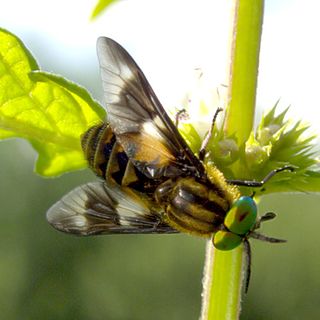
Superfamily Tabanoidea are insects in the order Diptera.

Haematopota is a genus of flies in the horse-fly family, Tabanidae. Among the horse-flies, they are most commonly known as clegs. Many species have colorful, sinuously patterned eyes in life, a character that fades after death. The wings are typically patterned with spots of grey. The genus is named from the Ancient Greek for blood-drinker: αἷμα, haîma, blood; πότης, pótës, drinker. Some species are known to be vectors of livestock diseases.
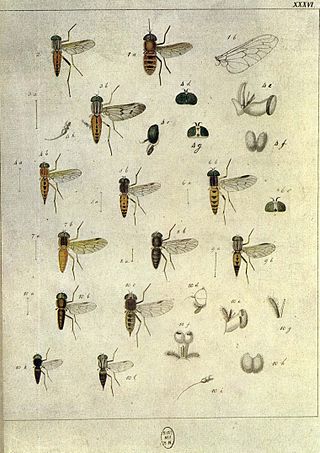
Pangonius is a genus within the horse-fly family (Tabanidae), often misspelled as Pangonia; Latreille originally published the name as Pangonius in 1802, emending it in 1804 to Pangonia, but the emendation is not valid under the International Code of Zoological Nomenclature. Some species that were earlier placed in this genus are now in the genus Philoliche.

Therioplectes is a genus of horse fly in the family Tabanidae.
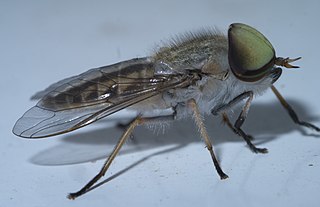
Tabaninae is a subfamily in the family Tabanidae commonly known as horse flies. There are more than 3000 described species in Tabaninae.

Diachlorini is a tribe of horse flies in the family Tabanidae.

Chrysopsinae is an insect subfamily in the family Tabanidae commonly known as deer flies or sheep flies and are bloodsucking insects considered pests to humans and cattle. They are large flies with large brightly-coloured compound eyes, and large clear wings with dark bands. They are larger than the common housefly and smaller than the horse-fly.
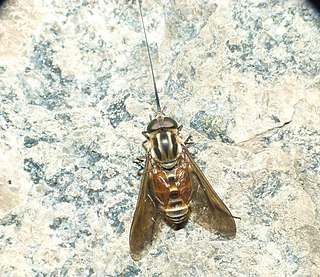
Philoliche is a genus of long-tongued Horse-flies found in the Old World. It appears to be the sole member of tribe Philolichini.
Fidena is a genus of horse-fly in the tribe Scionini.
Atelozella is a genus of horse flies in the family Tabanidae.
Ancala is a genus of horse flies in the family Tabanidae.
Bouvieromyiini is a tribe of horse flies in the family Tabanidae.
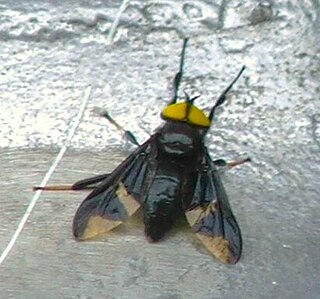
Rhinomyzini is a tribe of horse flies in the family Tabanidae.
Orgizomyia is a genus of horse flies in the family Tabanidae.
Tabanocella is a genus of horse flies in the family Tabanidae.
Rhigioglossa is a genus of horse flies in the family Tabanidae.









